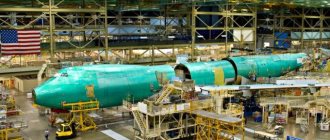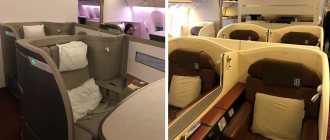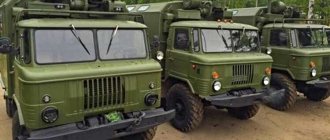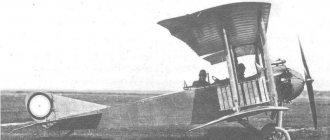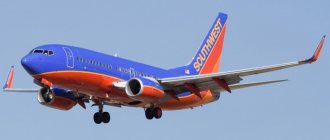The Boeing 777 has become a classic among modern passenger airliners. It is also called “three sevens”. This is a whole family of aircraft with a wide fuselage, which is represented by several modifications. These aircraft can be found on many airlines.
This passenger airliner was designed for routes of different lengths. Compared to other aircraft, it is more powerful, economical and environmentally friendly. We will talk about the passenger capacity of the Boeing 777 and its other technical characteristics in this article.
Boeing 777 modifications
Today, 6 active modifications of the aircraft are in operation and 2 are in development.
| Modification | Year of issue | Flight range, km | Number of passengers, people |
| 777-200 | 1995 | 9 695 | 305 (3 classes) 400 (2 classes) |
| 777-200ER | 1997 | 14 260 | 301 (3 classes) 400 (2 classes) |
| 777-200LR | 2006 | 17 500 | 301 (3 classes) |
| 777-300 | 1998 | 11 135 | 368 (3 classes) 468 (2 classes) |
| 777-300ER | 2004 | 14 685 | 365 (3 classes) |
| 777 Freighter | 2009 | 9 065 | |
| 777-8X (project) | 16 110 | 350-375 (3 classes) | |
| 777-9X (project) | 14 075 | 400-425 |
- The 777-200 was originally produced for American airlines. This is the minimum range version for the Boeing 777 family. It is no longer produced,
- 777-200ER - extended range modification for international airlines.
- 777-200LR - has the longest flight range among all aircraft in the family. This plane set an absolute record. It can fly without refueling between almost any airport in the world that can accommodate the aircraft.
- 777-300 - has an extended fuselage. With a single-class cabin layout, it can accommodate up to 550 passengers, which has increased its popularity among Japanese airlines, where routes are characterized by congestion.
- 777-300ER - the extended-range version has the most powerful jet engines in the world and is the best-selling Boeing 777 model.
- 777 Freighter is a cargo model of the airliner. The aircraft’s excellent operational characteristics—high payload capacity (103 tons), ease of maintenance, and economical fuel consumption—made it popular in the cargo transportation market.
Interesting! In March 2003, the Boeing 777-200ER set a record for flight on a single engine in emergency conditions - 177 minutes.
How much do different brands of airliners weigh?
The modern aviation industry produces a large number of aircraft of different brands and their modifications. For calculations, long-haul American Boeings, Airbuses from Europe and Russian (Soviet) specifications are used.
So, how much does a Boeing plane weigh? The measured weight characteristics of most models are shown in the table (maximum take-off weight values are indicated).
Boeing aircraft weight
Attention: The internal data of table “56” is corrupted!
How much an aircraft weighs depends on the model, series and modification (during modernization, for example, the fuselage is shortened, which makes it possible to increase the flight range and reduce the dead weight of the aircraft).
The empty weight (with built-in equipment) of the aircraft is:
- for model 737 – 27-45 tons;
- for model 767 – 80-103 tons;
- for model 747 – 162-215 tons.
The heaviest passenger aircraft among the Boeing family is rightfully considered the double-deck Boeing 747 800 - its capacity is 660 passengers with luggage, its flight range without additional refueling exceeds 14 thousand km at a speed of about a thousand km per hour. The operating weight (empty aircraft) is 162-215 tons, the maximum take-off weight is determined to be 440 tons.
The heaviest among Boeings is the double-deck 747-80.
Many air carriers fly European-made Airbus A380 aircraft. It is they, and not the popular Boeings, that are considered the largest passenger aircraft operated in commercial aviation. This giant aircraft, more than 70 meters long, has a double-deck layout and can accommodate between 555 and 850 travelers. The weight of an empty plane is already amazing.
Operating weight of Airbus A380 model aircraft
Attention: The internal data of table “57” is corrupted!
The maximum takeoff weight of Airbus aircraft ranges from 560 to 590 tons.
Airbus A380 aircraft are the largest passenger airliners
Among passenger airliners of Soviet and Russian production, the most popular were the Tu-154 in various modifications. Currently, the TU-204 has become the most powerful and popular airliner. The weight characteristics of Russian aircraft are shown in the table below.
TU-204 is the heaviest Russian passenger airliner
Weight of TU model aircraft
Attention: The internal data of table “58” is corrupted!
Passenger cabin plan
Among the various interior layout options, the most popular is the three-class one. The capacity of the various models ranges from 301 (three classes) to 550 (one class). With a three-class cabin plan, passengers are accommodated in the following compartments:
- Business Class;
- "comfort" class;
- Economy class.
The interior design of the cabin uses few right angles, mostly smooth, rounded lines. There are spacious shelves above the seats for hand luggage, soft side lighting. Before the Dreamliner, the Boeing 777 had the largest windows. Airlines can, if desired, quickly change the configuration of the cabin, move bathrooms, seats, and kitchens. The toilet uses the original design of the toilet lid - it closes slowly using a hydraulic hinge.
Interesting! For the first time in 2003, on the Boeing 777, separate seats (beds and chairs) were equipped for the crew to rest. They are located above the main cabin and equipped with ladders. Some of the beds were installed in the tail. Now other Boeing models are equipped with them.
Business Class
In business class, the seat layout can be of several types, most often it is 2-2-2. There are from two to five rows in total.
The kitchen and toilets are located in the bow, an additional kitchen block and toilets are located behind the last row.
Business class differences:
- wide comfortable chairs that transform into beds as needed;
- first-class service with a choice of individual menus;
- LCD monitors for video entertainment.
All seats in business class are considered comfortable, it all depends on the personal inclinations of the passengers.
Comfort class
In the comfort class, the seats have a 2-4-2 layout. Branch characteristics:
- the seats are wider and more comfortable than in economy class, the distance between the rows is also much greater;
- when the backrest is folded, the seat moves forward slightly, which does not cause discomfort to the passenger sitting behind;
- the seats are equipped with individual monitors and large tables;
- Passengers are provided with an improved menu.
In total, the “comfort” class occupies 5 rows. The seats in the first row of this section can be considered partly uncomfortable, as they are located immediately behind the business class toilet.
Important! Comfort class passengers do not have their own bathroom and use the toilet in economy class.
Economy class
Economy class has the most cramped conditions, but there is enough personal space according to the standards. The seats are arranged in a 3-4-3 pattern, and in the rear section, where the fuselage tapers, 2-4-2.
The internal space is divided into 3 parts by emergency exits. There are also toilet rooms here. The kitchen block is at the end of the salon and in the area of the second emergency exit.
The best seats are considered to be the seats immediately behind the emergency exits due to the increased space in front. By numbering, this can be row 17, 24 and 38 (to be confirmed with the air carrier). But these same seats are located right behind the toilets, which not everyone will like.
The seats in the rows in front of the toilets will also be hectic. This is the 23rd, 36, 37, 50, 51 row.
Passengers traveling as a couple may enjoy paired seats in the rear of the aircraft.
General information about the weight of aircraft
The visual effect of the airliner's lightness is created thanks to its successful aerodynamic shape. However, everyone who has flown by plane at least once in their life has encountered the rules for transporting baggage.
Airlines strictly monitor the weight of the client's luggage, weighing things before letting the passenger board the plane. Such strictness is due to the need to ensure the safety of passengers - exceeding the take-off maximum can both affect the comfort of the flight and lead to an airliner crash.
The term “aircraft take-off weight” itself is the totality of the load on board, which includes the initial weight of the aircraft, the weight of passengers and their luggage, as well as the weight of the fuel required for the flight.
The take-off weight of the airliner directly affects the aerodynamic characteristics of the aircraft, which is very important for a comfortable and safe flight. Therefore, aircraft designers strive to reduce the initial mass of the aircraft to a minimum.
However, the dimensions of modern aircraft require a significant initial mass - the famous Boeing 737 can weigh from 49 to 70 tons, depending on the specific modification of the model. The weight of an empty aircraft is usually two times lower than the maximum permissible take-off performance.
Light initial mass is achieved by using light metals in the manufacture of the fuselage, as well as in individual elements of the power plant.
Boeing weight
Let's first consider the most popular model - Boeing. 3/4 of the world's airlines use these airliners. This is due to their capacity and reliability. The following modifications of this airliner are most often used on the modern market: 737, 747 and 767.
Modifications 737100 and 737200 began to be produced back in the 1960s. Although model 737100 was not the most successful solution, it was these two models that laid the foundation for this popular series.
The empty weight of the Boeing 737100 was 29,600 kilograms, and the maximum take-off weight was 52,400 kilograms and 58,100 kilograms. The latest development, the Boeing 737800, developed on the basis of the 737400, has a mass of 41,400 kilograms and a maximum permissible take-off index of 79,000 kilograms.
A recent development, the Boeing 767 400ER, has amazing characteristics - the length of the side reaches 64.1 meters, while the weight of the empty airliner is 103,870 kilograms. The maximum permissible take-off weight in this airliner reaches 204,120 kilograms. Thus, an airline operating this aircraft can afford a payload of 49,000 kilograms.
Many people are interested in knowing the weight of the Boeing 747 model, which is striking in its size. The empty weight of this aircraft, depending on the modification, ranges from 141,900 kilograms to 167,000 kilograms. The maximum permissible take-off weight of this aircraft can reach 316 tons.
Airbus aircraft weight
These airliners, produced by a European holding company, are one of the main competitors of the famous Boeing. Their modifications are intended for medium-haul and long-haul flights. The heaviest aircraft among them is the well-known Airbus 380.
Various modifications from this series are the most spacious aircraft with the largest weight. However, they are leaders not only in these characteristics - it is noteworthy that the Airbus 380 is also the fastest airliner among subsonic aircraft.
Weights of various modifications of the empty side of the Airbus:
- A380-900 – 298,000 kilograms;
- A380-800ER – 276,000 kilograms;
- A380-800F – 252,000 kilograms;
- A380-800 – 276,000 kilograms;
- A380-700 – 267,000 kilograms.
With such significant performance, the Airbus is also surprising in that its maximum permissible take-off weight can reach 560,000 and 59,000 kilograms. The commercial load in this case reaches 83-86 tons.
The Airbus 380 is, in principle, the heaviest, largest and most spacious passenger airliner in the world. Also interesting is the medium-range model of the Airbus - 320, which competes with the Boeing 737. It has a capacity of up to 180 passengers, its weight is 42,000 kilograms, and the maximum take-off weight is 77,000 kilograms. In terms of the number of airliner sales, the European holding company engaged in the production of Airbuses is not inferior to the famous Boeing.
Design features
Features of the structural components of the airliner, its design and manufacture:
- How many engines does a Boeing 777 have to lift such a huge machine into the air? Like the vast majority of modern jet aircraft - two, but the largest and most powerful in the history of aircraft construction. The diameter of one of the engines installed on the airliner, GE90-115B, is only 0.3 m smaller than the width of the Boeing 737 cabin.
- The huge dimensions of the aircraft should determine how much the Boeing weighs. In fact, its weight is much lower than it might seem, thanks to the use of composite materials. Aerodynamic fairings, the main beams of the floor of the cabin for passengers, elevators - 9% of all parts - are made from them.
- The aircraft's wings are wider and thicker than those of other airliners, and their design is optimized for cruising speed. This contributed to an increase in flight range and altitude.
- The landing gear consists of six wheels with powerful struts, which distinguishes the Boeing 777 from other aircraft. One tire carries a 27-ton load.
- The airliner has three hydraulic systems that back up each other, while during landing it is necessary to use one.
- To provide emergency power, there is a retractable wind turbine under the fuselage.
- The spacious cockpit has a simple design and is equipped with an electronic fly-by-wire control system, but it was decided to leave the traditional steering wheels. Avionics are fully programmable. Fiber optic cables for avionics were used for the first time on a passenger aircraft.
Interesting! For the first time in history, when designing the Boeing 777, drawings on paper were not used, only computer graphics in three-dimensional images. Thanks to the preliminary computer assembly of the liner, it was possible to get rid of production errors.
Advantages of AN-225
When it was ready, there was no longer any need to transport parts of the Buran. Only once did he transport it for the air show in 1989 .
With a short period of its use, it managed to achieve a number of significant records. For example, he transported the largest amount of cargo in the entire history of aviation - almost 157 tons.
In 2009, he was included in the Guinness Book of Records, as he was able to transport a monocargo with a total weight of 188 tons .
In general, this model has almost 250 different records around the world. The aircraft had a number of significant advantages.
Reconstruction of AN-225.
- First of all, the ability to transport large loads with a total weight of 250 tons . For example, 50 cars in one flight or turbines and generators.
- Secondly, it is the transportation of cargo up to 200 tons during intracontinental flights , without transfers. And for intercontinental ones - up to 150 tons .
- Thirdly, on the outside of the fuselage there is the possibility of attaching various cargoes up to 200 tons .
Specifications
Airliners with basic fuselage length:
| Type | 777-200 | 777-200ER | 777-200LR | 777 Freighter |
| Length, m | 63,7 | |||
| Wingspan, m | 60,9 | 64,8 | ||
| Height, m | 18,5 | 18,8 | 18,6 | |
| Cabin width, m | 5,86 | |||
| Fuselage width, m | 6,19 | |||
| Cargo compartment volume, cubic meters | 150 | 636 | ||
| Maximum flight weight, kg | 247 210 | 297 560 | 347 450 | |
| Flight altitude, m | 13 140 | |||
| Maximum cruising speed, km/h | 905 | |||
| Engines | PW 4077 PR 877 GE90-77B | PW 4090 PR 892 PR 895 GE90-94B | GE90-110B GE90-115B | GE90-110B |
Extended versions:
| Type | 777-300 | 777-300ER |
| Length, m | 73,9 | |
| Wingspan, m | 60,9 | 64,8 |
| Height, m | 18,5 | 18,7 |
| Cabin width, m | 5,86 | |
| Fuselage width, m | 6,19 | |
| Cargo compartment volume, cubic meters m | 200 | |
| Maximum take-off weight, kg | 299 370 | 351 534 |
| Flight altitude, m | 13 140 | |
| Maximum cruising speed. km/h | 905 | |
| Engines | PW 4098 PR 892 GE90-94B | GE90-115B |
Deciding on the criteria
Considering that flights involve the aircraft overcoming the force of gravity, the gravity indicators of a loaded airliner are extremely important. It’s not for nothing that the technical description of each model contains two values: empty weight and take-off indices. The last criterion plays an important role for the smooth flow of air travel.
The take-off weight of the board also includes a commercial component - the number of seats for passengers and luggage
Since the classification of airliners involves a variety of modifications for flights, there are machines for long-haul travel and local lines. Moreover, the gradations of systematization imply an accurate calculation of the weight of the airliner, adapted for long-distance flights. Modern air carriers prefer to use American Boeing, European Airbus and aircraft produced by the USSR - Tu for such purposes.
Note that when ordering a specific model, airlines also focus on the commercial weight that the airliner is capable of lifting. After all, it is this criterion that determines the degree of profitability of the flight.
As you can see, such a significant factor is reflected in the demand for specific models, since the maximum permissible take-off weight requires a combination of several values. Designers are trying to achieve an optimal balance of the weight of an empty ship with the volume of fuel tanks and the reserve of the liner, which is used for commerce. This task is complicated by the ability of the aircraft to take off - after all, it is also determined by the weight of the aircraft.
History of creation
The first work on the creation of the Boeing 777 began in the 70s of the last century. According to the idea of the company's engineers, it was necessary to update several produced models at once and supplement them with new ones. These were versions of the 757, 767 with two engines and the new 777 airliner.
Interesting! The Boeing 777 was originally designed as a three-engine aircraft, but the developers encountered difficulties with the design of the tail section, and the project was frozen indefinitely.
The development of projects 757 and 767 was successfully completed. And then it turned out that the company’s aircraft line lacked a long-haul aircraft capable of transcontinental transportation of a large number of passengers. The company was also prompted to unfreeze the project by the work of the Airbus concern to create the Airbus A330, which would occupy the free segment of the market.
At first, the engineers planned not to create a new family, but to develop a new modification of the Boeing 767, which was given the name 767-X. It was planned to lengthen the fuselage and enlarge the wings. According to the project, the new airliner was designed for 340 passenger seats with a flight range of 13,500 km.
This concept was not understood by airlines. They wanted to have a salon with an easily changing configuration. Another condition was to reduce operating costs. As a result of a significant design change, the new Boeing 777 was introduced.
Interesting! For the first time in history, the development of a new airliner was carried out in close contact with representatives of air carriers and passengers. Never before has the opinion of consumers at the design stage been decisive.
1990 - work began on the creation of the Boeing 777, and after 5 years the airliner took off on its first commercial flight.
In 2013, the airline began developing new models of aircraft in the family - 777-8X, 777-9X.
How much does luggage weigh on an airplane?
The long-awaited vacation is approaching.
A holiday destination has already been chosen, plane tickets have been purchased and a list of the “essential” things has been compiled - all that remains is to pack all the “goods” into bulky suitcases and board the snow-white liner at the appointed time. However, you should not take the entire contents of your wardrobe with you on a week-long vacation. The fact is that there are certain limits on baggage transportation set by many airlines. Therefore, before departure, you should ask what the permissible weight of luggage on the aircraft of the selected flight of this airline is.
Let's first define the types of personal cargo:
- Checked baggage is usually a suitcase that needs to be checked into the cargo hold of the aircraft.
- personal baggage is a small handbag that is allowed to be carried on board the aircraft. During the flight it is located on a shelf located above the passenger seat.
- personal items are not subject to weighing and do not belong to hand luggage (outerwear, umbrella, cane, laptop, video camera and camera).
- Duty-free purchases made at the airport or on board an airplane are also not included in the carry-on baggage category.
- baggage of non-standard format - this type includes strollers (children and wheelchairs) transported free of charge in excess of the norm. However, in such cases, you should make prior agreement with the company.
Place of production
The Boeing 777 is manufactured at its main facility in Seattle, Washington. This plant is located in Everett, near Seattle. The assembly plant is located there, and components are supplied from almost all US states. In total, more than 600 suppliers from different countries are involved in the manufacture of the aircraft.
Interesting! There is no indoor facility in the world larger than Boeing's facility in Seattle. The total length of its façade is 4 km.
It takes about four months from the start of assembly to the delivery of the finished airliner.

